Other rights may be detailed in text
Other rights may be detailed in text
| Jun 2003 | 589 | May 2008 | 215 | May 2013 | 307 |
| Mar 2004 | 515 | Mar 2010 | 285 | Oct 2015 | 282 |
| Apr 2005 | 175 | Jun 2011 | 251 |
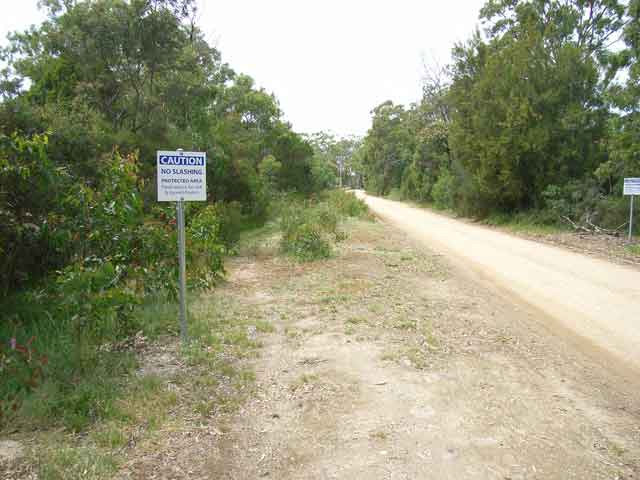
Signs for several roadside browse collections zones are sites preserved with the assistance of the East Gippsland Shire Council and are a vital part of koala care and rehabilitation.
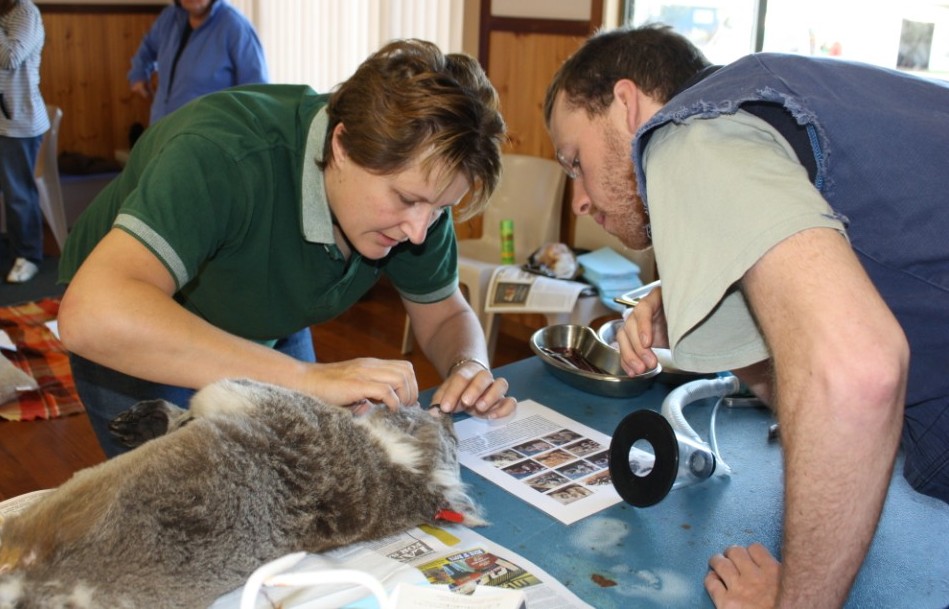
Each koala's overall health, eyes and teeth are checked before it is tagged.
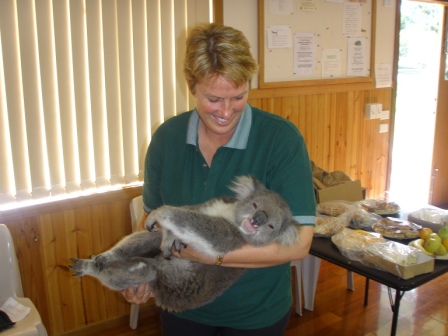
The program aims to gradually reduce numbers through translocation or fertility control and manage the impact on the remaining habitat.
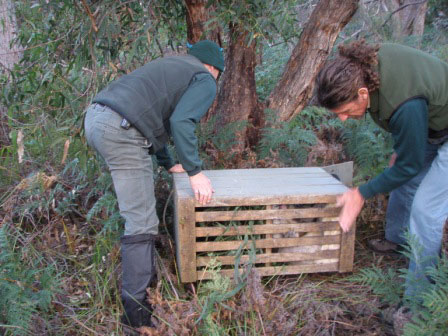
For the regular count and catch up with some of the Island koalas, each catch is carefully recorded,
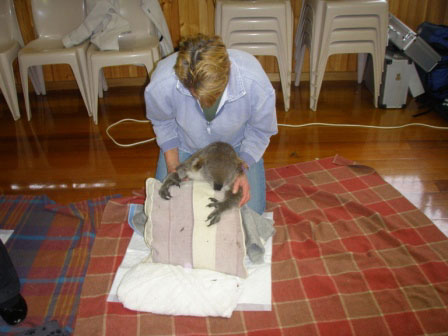
Volunteers monitor the recovery of each 'patient' to make sure they're ready to be released back into the tree from where they were caught.
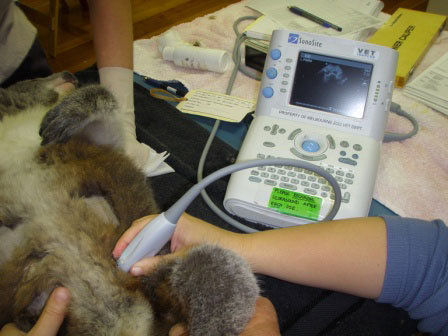
Except for females with young, breeding adults are sterilised.
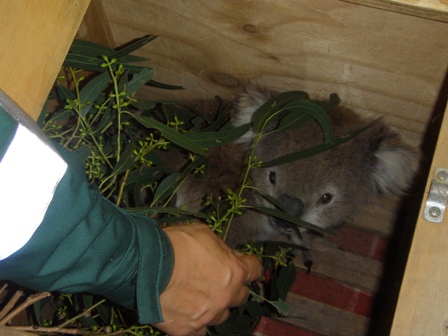
It's important to keep a supply of fresh food available during the day.

Joeys need special attention to keep them feeling safe and secure.
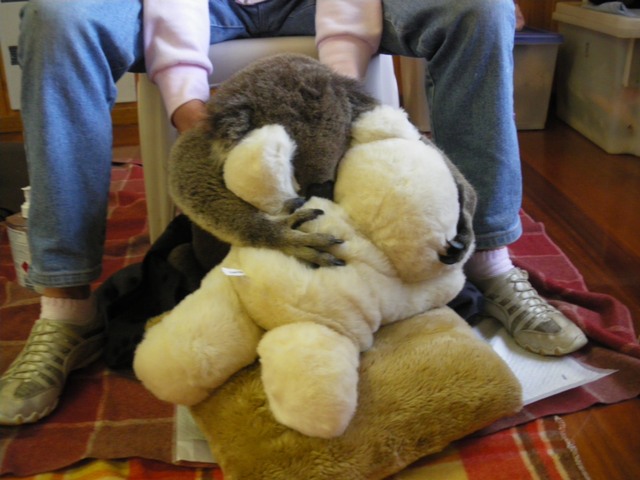
Sometimes it helps having a cuddle.
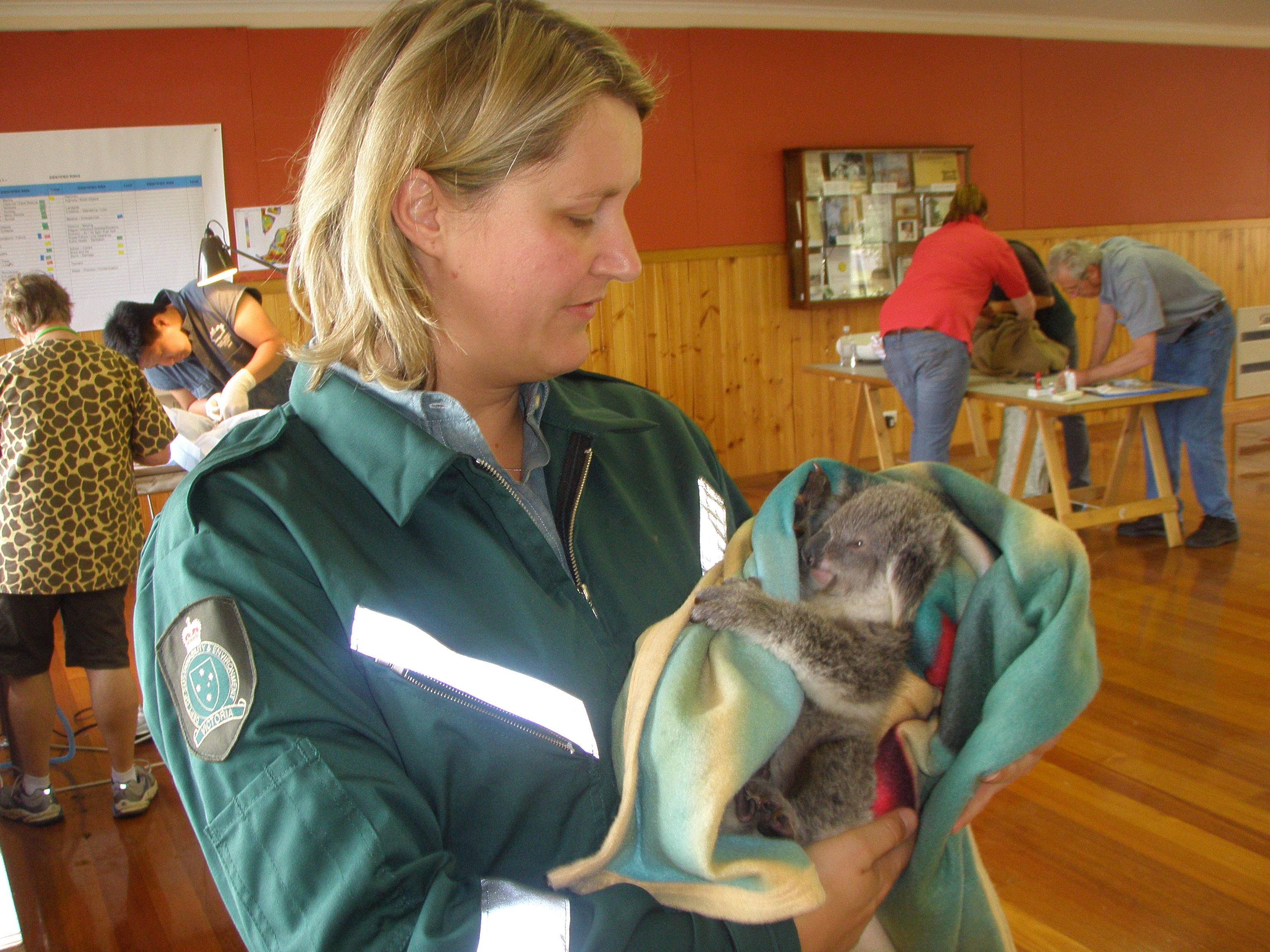
Any questions about koala management can be referred to: Leona Waldegrave-Knight, Wildlife Management Officer (Biodiversity Services/DELWP) t: 5152 0447
e: Leona.WaldegraveKnight@dewlp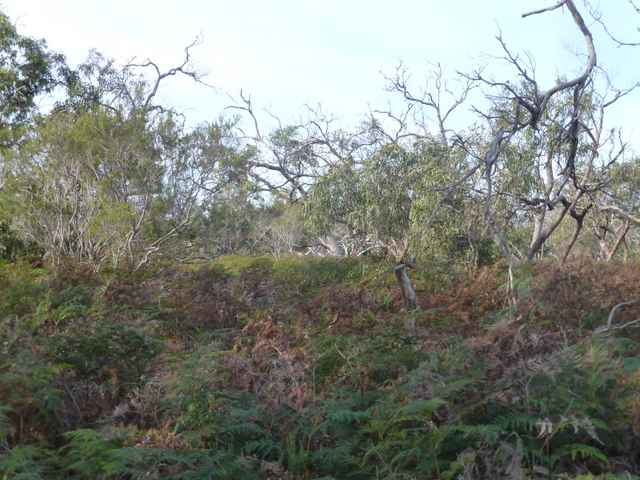
The greatest threat to all our wildlife is the destruction of their habitat. RI Landcare members identify the impact bracken has on gum trees as particularly interesting and are tackling the bracken issue.
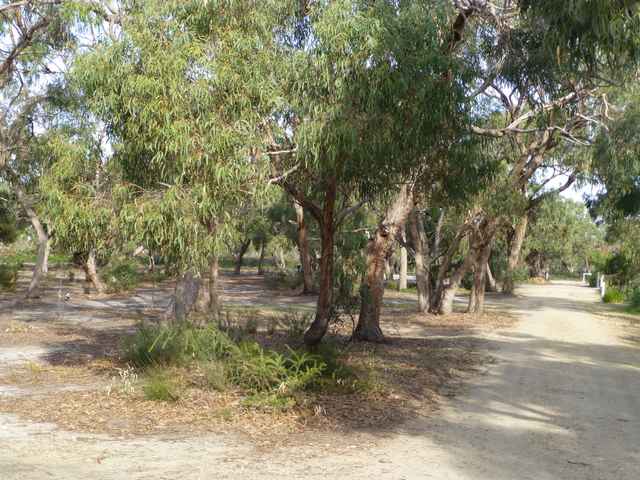
Where RI Landcare is working to control bracken and increase biodiversity. In controlled areas gums and understorey do better.
To ensure a viable and healthy population for the future, an annual management program is undertaken by Parks Victoria, assisted by Gunai Kurnai rangers, volunteers from Raymond Island, local schools and veterinary clinics.
| Jun 2003 | 589 | Jun 2011 | 251 |
| Mar 2004 | 515 | May 2013 | 307 |
| Apr 2005 | 175 | Oct 2015 | 282 |
| May 2008 | 215 | ||
| Mar 2010 | 285 |
